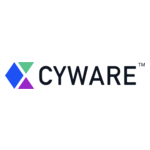Artificial Intelligence Tops IT Decision-Makers' List of Investment Priorities as Skillset Ranked Lowest Amongst Team Members
Skillsoft's New IT Skills & Salary Report Highlights Trends Impacting Technology Careers, Investments, and Talent Strategies for 2025
INVESTORS
Rich Walker
rich.walker@skillsoft.com
MEDIA
Cameron Martin
cameron.martin@skillsoft.com
Skillsoft (NYSE: SKIL), a leading platform for transformative learning experiences, today released its 2024 IT Skills and Salary Report. Based on insights from more than 5,100 global IT decision-makers and professionals, the annual report examines the state of the IT industry and highlights the growing need for workforce upskilling and reskilling to keep pace with technological advancements.
Key findings from this year’s report include:
- Artificial intelligence (AI) / machine learning (ML) remains the top investment priority for IT decision-makers as they rank this skillset lowest amongst team members across nearly 30 competencies.
- IT decision-makers are struggling most with hiring cybersecurity and information security talent (38%). One-in-five are having difficulty finding AI / ML talent.
- 65% of IT decision-makers say there are skill gaps across their teams, with 72% planning to address them through training existing talent.
- 94% of IT decision-makers say they have observed a tangible benefit among their workforce from training, compared to 90% last year and 61% in 2022.
- IT professionals’ top reason for skilling is tied to interest in learning new skills (54%), followed by becoming more competitive in the job market (53%) and improving job security (46%).
- 58% of IT professionals shared their organization offers a leadership development program. 28% plan to invest in developing leadership skills in the new year.
“This year has reinforced that when it comes to the technology industry, there are two constants: change and the need to continuously adapt. Our report highlights current organizational priorities and skilling needs while offering insights into how leaders and individuals can embrace learning opportunities to drive better business outcomes,” said Orla Daly, Chief Information Officer, Skillsoft. “As AI technologies are further embedded into workplace operations and the demand for cybersecurity talent and leadership skills intensifies, it is more important than ever that organizations adopt a proactive approach to skill-building. This involves not only investing in holistic training programs that encompass technical skills, leadership skills, and certifications, but also fostering a culture of continuous learning and innovation with opportunities to put new skills into practice.”
Addressing Skill Gaps with Targeted Training
65% of respondents said they continue to face skill gaps on their teams, with over half (56%) anticipating them to persist over the next one to two years. Upskilling and reskilling existing talent continues to surge as the predominant approach to address this issue, with 72% of IT decision-makers planning to train their teams to address skill gaps, followed by hiring additional staff (38%) and leveraging AI, including generative AI (30%), to support automating processes and becoming more efficient.
IT decision-makers’ top three investment priorities for the coming year are AI / ML (47%), cybersecurity and information security (42%), and cloud computing (36%). Despite these priorities, IT decision-makers recognize a significant skill gap, rating their teams’ AI / ML skills lowest overall (34%) among nearly 30 competencies. Beyond addressing talent shortages, upskilling was found to boost team morale (60%), enhance innovation (55%), and improve talent retention (49%). Meanwhile, if skill gaps remain unaddressed, 56% of respondents believe they present a medium risk to the business and increase stress on existing employees (54%), stretch project durations (42%), and decrease the ability to meet business objectives (37%).
The Critical Role of Diverse Offerings in Talent Development and Leadership
Recent insights reveal significant gaps in the effectiveness of skilling programs. Nearly a fourth (22%) of IT decision-makers expressed dissatisfaction with their organization's talent development initiatives. To improve these programs, organizations should consider adopting a blended learning approach. IT professionals find in-person, instructor-led sessions as the most effective, followed by a mix of online and in-person training and online instructor-led options, highlighting the need to customize training methods to optimize learning outcomes and meet the evolving demands of the workforce.
Successful talent development programs must also provide access to certifications, which have become crucial for both individual career growth and organizational success in today's competitive landscape. Nearly all (97%) IT decision-makers say certified staff adds value to their organization, most prominently by bridging organizational skill gaps (49%), resolving issues efficiently (49%), and boosting productivity (48%). Over a third of IT decision-makers share that certified team members bring at least $25,000 in annual added value, helping improve the quality of work (60%) and increase engagement (48%) and efficiency (43%).
As respondents chart their career paths, they are increasingly relying on a mix of IT/tech certifications (67%), technology skills (66%), and soft skills (56%) to stand out and address the varied demands of modern businesses. This comprehensive skill prioritization is reflected in the qualities deemed essential for leadership. Respondents believe that the most crucial skills for IT leaders are power skills. The top five most important skills for leaders being team communication (74%), problem-solving (70%), critical thinking (70%), interpersonal communication (66%), and technical skills (62%).
Continuous Learning Tied to Job Satisfaction
While a quarter of respondents feel extremely satisfied with their jobs, a significant portion (61%) are still likely to look for a new job in the coming year. Respondents seeking new employers want an increase in compensation (43%), access to training or growth opportunities (35%), and remote/hybrid work options (35%). Access to talent development opportunities not only helps mitigate skill gaps, but also ensures employees are satisfied, engaged, and equipped to succeed.
For additional insights and takeaways for organizations to optimize training within their technology teams, download the 2024 IT Skills and Salary Report.
REPORT METHODOLOGY
Skillsoft's 2024 IT Skills and Salary Survey was conducted online from May to September 2024 using the Qualtrics XM Platform. Skillsoft distributed survey invitations to professionals around the world. The survey was made available in blogs, newsletters, social media, and the Skillsoft website. After cleaning the data, the survey yielded more than 5,100 complete responses from IT decision-makers, including executives, senior leaders, and mid-level managers, and professionals worldwide. The survey was tabulated using the Qualtrics XM Platform.
ABOUT SKILLSOFT
Skillsoft (NYSE: SKIL) delivers transformative learning experiences that propel organizations and people to grow together. The Company partners with enterprise organizations and serves a global community of learners to prepare today’s employees for tomorrow’s economy. With Skillsoft, customers gain access to blended, multimodal learning experiences that do more than build skills, they grow a more capable, adaptive, and engaged workforce. Through a portfolio of best-in-class content, a platform that is personalized and connected to customer needs, world-class tech and a broad ecosystem of partners, Skillsoft drives continuous growth and performance for employees and their organizations by overcoming critical skill gaps and unlocking human potential.
View source version on businesswire.com: https://www.businesswire.com/news/home/20241113929992/en/

 Business wire
Business wire 












Add Comment